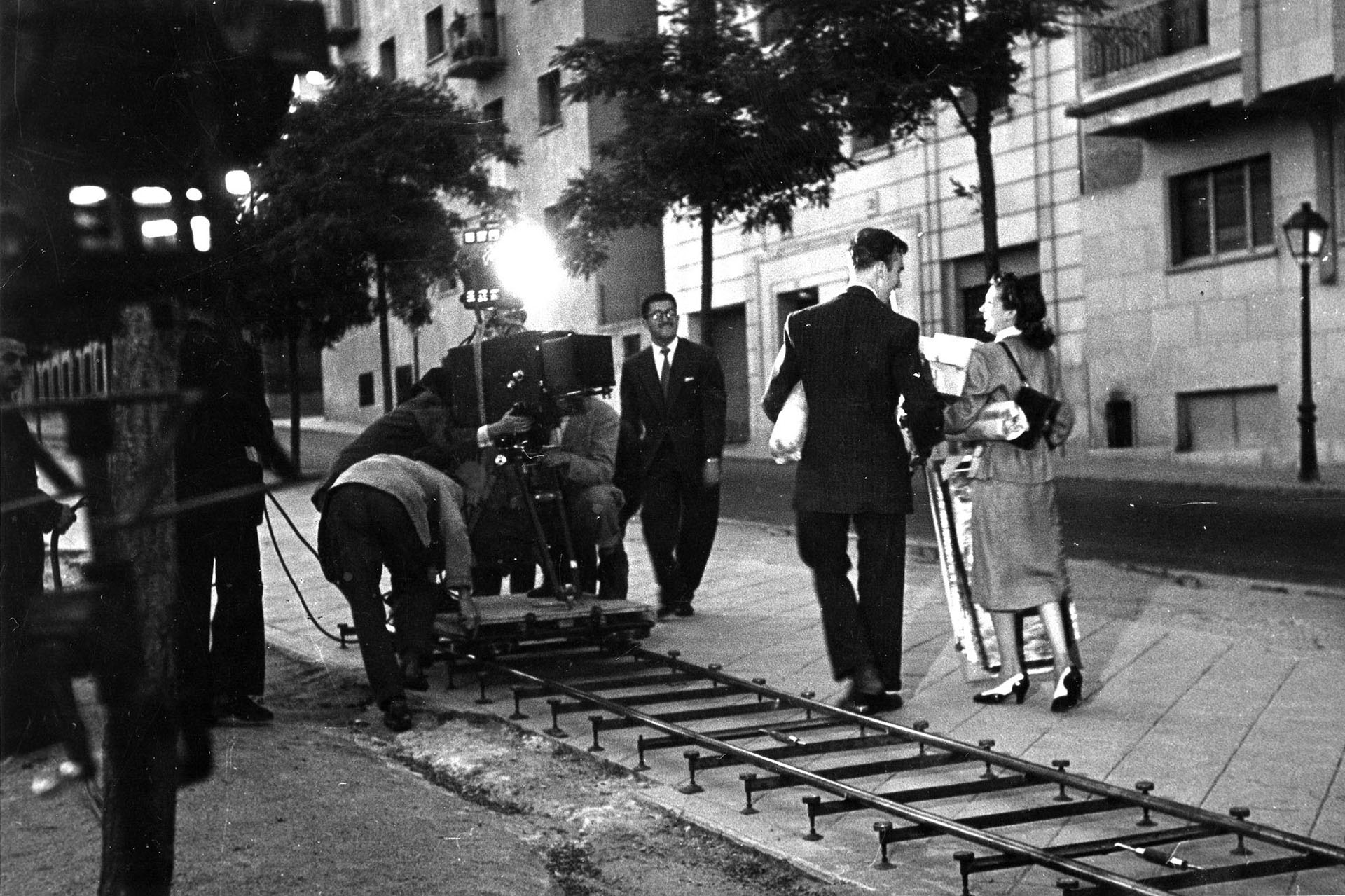
Juan and Carmen are a modest married couple. She is a housewife and he works as an electrician at a film studio. Their dreams of a better life come true when they win a competition sponsored by a soap brand. They are elected as the “happy couple”: the chosen couple gets all sorts of invitations and presents during 24 hours. But that very day Juan must solve two problems of which Carmen is unaware.
FILM NOTES
From the beginning of his career, Berlanga developed a sharp, satirical style. In fact, Esa pareja feliz was an extremely personal film, dealing with the themes of poverty and the Spanish economic crises of the 1950s, and contrasted significantly with the traditional Spanish films of that era that treated only patriotic, religious or ‘folkloric’ subjects. Berlanga’s true genius manifested itself in his lampooning of certain aspects of Spain’s political and social worlds, and his hysterical satirizing of certain Spanish foibles did not endear him or his films to the Franco regime. Spanish film critic Vicente Molina-Foix believes both Bardem and Berlanga owe a great debt to the Italian cinema of neorealism, of Rossellini and Zavattini, since they began to film their own screenplays according to their own ideas of Spanish realism in the culturally impoverished Spain of the early 1950s. Berlanga admits to these influences as well as to that of French director Jacques Becker.
(Ronald Schwartz, Spanish Film Directors (1950-1985): 21 Profiles, The Scarecrow Press, Inc., Metuchen-London 1986)
Juan Antonio Bardem and I made this film under the influence of two great sources of inspiration: one from the theatre, the Arniches-style sainete, and the other a Becker film that really impressed us, Antoine and Antoinette. But to be honest, the majority of the films we were watching were American. I really admired Capra. I think that if there is a Capraesque quality to the film then that is largely down to me rather than Bardem, who was never really a fan of American comedy. I don’t think he liked that rightwing anarchism that ultimately governs Capra’s world … Ninety percent of critics think that the bitterness in my cinema is due to Rafael Azcona. I like the fact that some people also recognise this sense of bitterness in Esa pareja feliz. This bitterness is an ancient heritage that accompanies all Spaniards. […] Before beginning the shoot, we watched a weekly series of Italian film screenings. Cesare Zavattini, whose personality greatly fascinated me, participated. Neorealism undoubtedly influenced us.
(Luis García Berlanga in Juan Hernández Les and Manuel Hidalgo (eds), El último austro-húngaro: conversaciones con Berlanga, Editorial Analgama, Barcelona 1981)
Courtesy of Cineteca – Il Cinema Ritrovato

